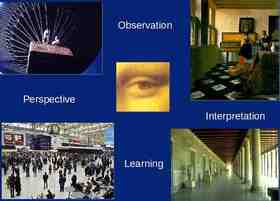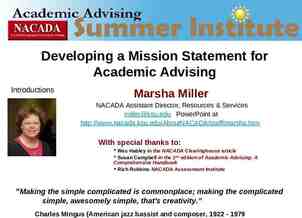Tamkang University 資訊管理專題 Tamkang University Hot Issues of Information
75 Slides5.56 MB
Tamkang University 資訊管理專題 Tamkang University Hot Issues of Information Management Information Systems in Global Business: UPS (Chap. 1) 1051IM4B02 TLMXB4B (M0842) Tue 3,4 (10:10-12:00) B507 Min-Yuh Day 戴敏育 Assistant Professor 專任助理教授 Dept. of Information Management, Tamkang University 淡江大學 資訊管理學系 http://mail. tku.edu.tw/myday/ 2016-09-20 1
課程大綱 (Syllabus) 週次 (Week) 日期 (Date) 內容 (Subject/Topics) 1 2016/09/13 Introduction to Case Study for Information Management Hot Topics 2 2016/09/20 Information Systems in Global Business: UPS (Chap. 1) (pp.53-54) 3 2016/09/27 Global E-Business and Collaboration: P&G (Chap. 2) (pp.84-85) 4 2016/10/04 Information Systems, Organization, and Strategy: Starbucks (Chap. 3) (pp.129-130) 5 2016/10/11 Ethical and Social Issues in Information Systems: Facebook (Chap. 4) (pp.188-190) 2
課程大綱 (Syllabus) 週次 (Week) 日期 (Date) 內容 (Subject/Topics) 6 2016/10/18 IT Infrastructure and Emerging Technologies: Amazon and Cloud Computing (Chap. 5) (pp. 234236) 7 2016/10/25 Foundations of Business Intelligence: IBM and Big Data (Chap. 6) (pp.261-262) 8 2016/11/01 Telecommunications, the Internet, and Wireless Technology: Google, Apple, and Microsoft (Chap. 7) (pp.318-320) 9 2016/11/08 Midterm Report ( 期中報告 ) 10 2016/11/15 期中考試週 3
課程大綱 (Syllabus) 週次 日期 內容( Subject/Topics ) 11 2016/11/22 Enterprise Applications: Summit and SAP (Chap. 9) (pp.396-398) 12 2016/11/29 E-commerce: Zagat (Chap. 10) (pp.443-445) 13 2016/12/06 Enhancing Decision Making: Zynga (Chap. 12) (pp.512-514) 14 2016/12/13 Building Information Systems: USAA (Chap. 13) (pp.547-548) 15 2016/12/20 Managing Projects: NYCAPS and CityTime (Chap. 14) (pp.586-588) 16 2016/12/27 Final Report I ( 期末報告 I) 17 2017/01/03 Final Report II ( 期末報告 II) 18 2017/01/10 期末考試週 4
Management Information Systems: Managing the Digital Firm 1 2 3 4 Organization, Management, and the Networked Enterprise Information Technology Infrastructure Key System Applications for the Digital Age Building and Managing Systems Source: Kenneth C. Laudon & Jane P. Laudon (2014), Management Information Systems: Managing the Digital Firm, Thirteenth Edition, Pearson. 5
Chap. 1 Information Systems in Global Business: UPS 6
Case Study: UPS (Chap. 1) (pp.53-54) UPS Competes Globally with Information Technology 1. What are the inputs, processing, and outputs of UPS’s package tracking system? 2. What technologies are used by UPS? How are these technologies related to UPS’s business strategy? 3. What strategic business objectives do UPS’s information systems address? 4. What would happen if UPS’s information systems were not available? 7
Information Management (MIS) Information Systems Source: Kenneth C. Laudon & Jane P. Laudon (2014), Management Information Systems: Managing the Digital Firm, Thirteenth Edition, Pearson. 8
Overview of Fundamental MIS Concepts Business Challenges Management Organization Information System Business Solutions Technology Source: Kenneth C. Laudon & Jane P. Laudon (2014), Management Information Systems: Managing the Digital Firm, Thirteenth Edition, Pearson. 9
Business Model 8 6 2 4 Key Activities Key Partners 7 Customer Relationships Value Proposition Key Resources 9 Cost Structure 1 Customer Segments 3 Channels 5 Revenue Streams Source: Alexander Osterwalder & Yves Pigneur, Business Model Generation: A Handbook for Visionaries, Game Changers, and Challengers, Wiley, 2010. 10
Ponsse: Efficiency in Wood Harvesting with Information System Source: http://www.ponsse.com/ Source: Kenneth C. Laudon & Jane P. Laudon (2014), Management Information Systems: Managing the Digital Firm, Thirteenth Edition, Pearson. 11
Overview of Fundamental MIS Concepts using an integrated framework for describing and analyzing information systems Develop new production processes Develop new management techniques Increase use of data by managers Build new business production processes Train new channels of information flow Train employee in use of the systems Develop GPS systems for field use Create email links with operators Develop data base to receive information Business Challenges Management New sources of competition Declining customer base Increasing costs Information System Organization Business Solutions Display and report GPS location data Reports on production Provide online coordination Optimize utilization of forests Increase production efficiency Coordinate production Source: Kenneth C. Laudon & Jane P. Laudon (2014), Management Information Systems: Managing the Digital Firm, Thirteenth Edition, Pearson. process 12 Technology
Information Systems in Global Business 1. How are information systems transforming business and what is their relationship to globalization? 2. Why are information systems so essential for running and managing a business today? 3. What exactly is an information system? How does it work? What are its management, organization, and technology components? 4. What are complementary assets? Why are complementary assets essential for ensuring that information systems provide genuine value for an organization? 5. What academic disciplines are used to study information systems? How does each contribute to an understanding of information systems? What is a sociotechnical systems perspective? Source: Kenneth C. Laudon & Jane P. Laudon (2014), Management Information Systems: Managing the Digital Firm, Thirteenth Edition, Pearson. 13
How information systems are transforming business Emerging mobile digital platform Growing business use of “big data” Growth in cloud computing Source: Kenneth C. Laudon & Jane P. Laudon (2014), Management Information Systems: Managing the Digital Firm, Thirteenth Edition, Pearson. 14
Globalization opportunities Internet has drastically reduced costs of operating on global scale Increases in foreign trade, outsourcing Presents both challenges and opportunities Source: Kenneth C. Laudon & Jane P. Laudon (2014), Management Information Systems: Managing the Digital Firm, Thirteenth Edition, Pearson. 15
The Interdependence Between Organizations and Information Technology Source: Kenneth C. Laudon & Jane P. Laudon (2014), Management Information Systems: Managing the Digital Firm, Thirteenth Edition, Pearson. 16
Strategic Business Objectives of Information Systems 1. 2. 3. 4. 5. 6. Operational Excellence New Products, Services and Business Models Customer and Supplier Intimacy Improved Decision Making Competitive Advantage Survival Source: Kenneth C. Laudon & Jane P. Laudon (2014), Management Information Systems: Managing the Digital Firm, Thirteenth Edition, Pearson. 17
1. Operational Excellence Improvement of efficiency to attain higher profitability Information systems, technology an important tool in achieving greater efficiency and productivity Walmart’s Retail Link system links suppliers to stores for superior replenishment system Source: Kenneth C. Laudon & Jane P. Laudon (2014), Management Information Systems: Managing the Digital Firm, Thirteenth Edition, Pearson. 18
2. New Products, Services, and Business Models Business model: describes how company produces, delivers, and sells product or service to create wealth Information systems and technology a major enabling tool for new products, services, business models – Examples: Apple’s iPad, Google’s Android OS, and Netflix Source: Kenneth C. Laudon & Jane P. Laudon (2014), Management Information Systems: Managing the Digital Firm, Thirteenth Edition, Pearson. 19
3. Customer and Supplier Intimacy Serving customers well leads to customers returning, which raises revenues and profits. – Example: High-end hotels that use computers to track customer preferences and used to monitor and customize environment Intimacy with suppliers allows them to provide vital inputs, which lowers costs. – Example: JCPenney’s information system which links sales records to contract manufacturer Source: Kenneth C. Laudon & Jane P. Laudon (2014), Management Information Systems: Managing the Digital Firm, Thirteenth Edition, Pearson. 20
4. Improved Decision Making Without accurate information: – Managers must use forecasts, best guesses, luck – Results in: Overproduction, underproduction Misallocation of resources Poor response times – Poor outcomes raise costs, lose customers Example: – Verizon’s Web-based digital dashboard to provide managers with real-time data on customer complaints, network performance, line outages Source: Kenneth C. Laudon & Jane P. Laudon (2014), Management Information Systems: Managing the Digital Firm, Thirteenth Edition, Pearson. 21
5. Competitive advantage Delivering better performance Charging less for superior products Responding to customers and suppliers in real time Examples: Apple, Walmart, UPS Source: Kenneth C. Laudon & Jane P. Laudon (2014), Management Information Systems: Managing the Digital Firm, Thirteenth Edition, Pearson. 22
6. Survival Information technologies as necessity of business Industry-level changes – Example: Citibank’s introduction of ATMs Governmental regulations requiring recordkeeping – Examples: Toxic Substances Control Act, SarbanesOxley Act Source: Kenneth C. Laudon & Jane P. Laudon (2014), Management Information Systems: Managing the Digital Firm, Thirteenth Edition, Pearson. 23
Information Systems Are More Than Computers Source: Kenneth C. Laudon & Jane P. Laudon (2014), Management Information Systems: Managing the Digital Firm, Thirteenth Edition, Pearson. 24
Dimensions of Information Systems Organizations – People, structure, business processes, politics, and culture. Management – Make sense out of the many situations faced by organizations, make decisions, and formulate action plans to solve organizational problems. Information Technology – Computer hardware, software, data management technology, networking and telecommunications technology Source: Kenneth C. Laudon & Jane P. Laudon (2014), Management Information Systems: Managing the Digital Firm, Thirteenth Edition, Pearson. 25
Perspectives on Information Systems: Data and Information Source: Kenneth C. Laudon & Jane P. Laudon (2014), Management Information Systems: Managing the Digital Firm, Thirteenth Edition, Pearson. 26
Functions of an Information System Source: Kenneth C. Laudon & Jane P. Laudon (2014), Management Information Systems: Managing the Digital Firm, Thirteenth Edition, Pearson. 27
Levels in a Firm Source: Kenneth C. Laudon & Jane P. Laudon (2014), Management Information Systems: Managing the Digital Firm, Thirteenth Edition, Pearson. 28
MAJOR BUSINESS FUNCTIONS FUNCTION PURPOSE Sales and marketing Selling the organization’s products and services Manufacturing and production Producing and delivering products and services Finance and accounting Managing the organization’s financial assets and maintaining the organization’s financial records Human resources Attracting, developing, and maintaining the organization’s labor force; maintaining employee records Source: Kenneth C. Laudon & Jane P. Laudon (2014), Management Information Systems: Managing the Digital Firm, Thirteenth Edition, Pearson. 29
IT ISN’T JUST TECHNOLOGY: A BUSINESS PERSPECTIVE ON INFORMATION SYSTEMS Source: Kenneth C. Laudon & Jane P. Laudon (2014), Management Information Systems: Managing the Digital Firm, Thirteenth Edition, Pearson. 30
The Business Information Value Chain Source: Kenneth C. Laudon & Jane P. Laudon (2014), Management Information Systems: Managing the Digital Firm, Thirteenth Edition, Pearson. 31
The Business Information Value Chain From a business perspective, information systems are part of a series of value-adding activities for acquiring, transforming, and distributing information that managers can use to improve decision making, enhance organizational performance, and, ultimately, increase firm profitability. Source: Kenneth C. Laudon & Jane P. Laudon (2014), Management Information Systems: Managing the Digital Firm, Thirteenth Edition, Pearson. 32
COMPLEMENTARY SOCIAL, MANAGERIAL, AND ORGANIZATIONAL ASSETS REQUIRED TO OPTIMIZE RETURNS FROM INFORMATION TECHNOLOGY INVESTMENTS Source: Kenneth C. Laudon & Jane P. Laudon (2014), Management Information Systems: Managing the Digital Firm, Thirteenth Edition, Pearson. 33
Organizational assets Supportive organizational culture that values efficiency and effectiveness Appropriate business model Efficient business processes Decentralized authority Distributed decision-making rights Strong IS development team Source: Kenneth C. Laudon & Jane P. Laudon (2014), Management Information Systems: Managing the Digital Firm, Thirteenth Edition, Pearson. 34
Managerial assets Strong senior management support for technology investment and change Incentives for management innovation Teamwork and collaborative work environments Training programs to enhance management decision skills Management culture that values flexibility and knowledge-based decision making. Source: Kenneth C. Laudon & Jane P. Laudon (2014), Management Information Systems: Managing the Digital Firm, Thirteenth Edition, Pearson. 35
Social assets The Internet and telecommunications infrastructure IT-enriched educational programs raising labor force computer literacy Standards (both government and private sector) Laws and regulations creating fair, stable market environments Technology and service firms in adjacent markets to assist implementation Source: Kenneth C. Laudon & Jane P. Laudon (2014), Management Information Systems: Managing the Digital Firm, Thirteenth Edition, Pearson. 36
Contemporary Approaches to Information Systems Source: Kenneth C. Laudon & Jane P. Laudon (2014), Management Information Systems: Managing the Digital Firm, Thirteenth Edition, Pearson. 37
Contemporary Approaches to Information Systems Technical Approach Behavioral Approach Sociotechnical Systems Source: Kenneth C. Laudon & Jane P. Laudon (2014), Management Information Systems: Managing the Digital Firm, Thirteenth Edition, Pearson. 38
A Sociotechnical Perspective on Information Systems Source: Kenneth C. Laudon & Jane P. Laudon (2014), Management Information Systems: Managing the Digital Firm, Thirteenth Edition, Pearson. 39
Business Model 40
Business Model 8 6 2 4 Key Activities Key Partners 7 Customer Relationships Value Proposition Key Resources 9 Cost Structure 1 Customer Segments 3 Channels 5 Revenue Streams Source: Alexander Osterwalder & Yves Pigneur, Business Model Generation: A Handbook for Visionaries, Game Changers, and Challengers, Wiley, 2010. 41
Definition of Business Model A business model describes the rationale of how an organization creates, delivers, and captures value. Source: Alexander Osterwalder & Yves Pigneur, Business Model Generation: A Handbook for Visionaries, Game Changers, and Challengers, Wiley, 2010. 42
Definition of Business Strategy A business strategy is a long term plan of action designed to achieve a particular goal or set of goals or objectives. Source: (Ostenwalder, Pigneur and Tucci, 2005) 43
Business Model Canvas Key Activities Key Partners Customer Relationships Value Preposition Customer Segments Key Resources Channels Cost Structure Revenue Streams Source: http://nonlinearthinking.typepad.com/nonlinear thinking/2008/07/the-business-model-canvas.html https://www.youtube.com/watch?v QoAOzMTLP5s 44
Business Model Canvas Infrastructure Management Key Product Customer Activities Key Partners Relationships Value Preposition Key Resources Financial Cost Aspects Structure Customer Interface Customer Segments Channels Revenue Streams Source: http://nonlinearthinking.typepad.com/nonlinear thinking/2008/07/the-business-model-canvas.html https://www.youtube.com/watch?v QoAOzMTLP5s 45
Business Model Canvas Explained Source: http://www.youtube.com/watch?v QoAOzMTLP5s 46
The 9 Building Blocks of Business Model 8 6 7 9 2 4 1 3 5 Source: Alexander Osterwalder & Yves Pigneur, Business Model Generation: A Handbook for Visionaries, Game Changers, and Challengers, Wiley, 2010. 47
The 9 Building Blocks of Business Model Source: Alexander Osterwalder & Yves Pigneur, Business Model Generation: A Handbook for Visionaries, Game Changers, and Challengers, Wiley, 2010. 48
1. Customer Segments Defines the different groups of people or organizations an enterprise aims to reach and serve Source: Alexander Osterwalder & Yves Pigneur, Business Model Generation: A Handbook for Visionaries, Game Changers, and Challengers, Wiley, 2010. 49
2. Value Propositions Describes the bundle of products and services that create value for a specific Customer Segment Source: Alexander Osterwalder & Yves Pigneur, Business Model Generation: A Handbook for Visionaries, Game Changers, and Challengers, Wiley, 2010. 50
3. Channels Describes how a company communicates with and reaches its Customer Segments to deliver a Value Proposition Source: Alexander Osterwalder & Yves Pigneur, Business Model Generation: A Handbook for Visionaries, Game Changers, and Challengers, Wiley, 2010. 51
4. Customer Relationships Describes the types of relationships a company establishes with specific Customer Segments Source: Alexander Osterwalder & Yves Pigneur, Business Model Generation: A Handbook for Visionaries, Game Changers, and Challengers, Wiley, 2010. 52
5. Revenue Streams Represents the cash a company generates from each Customer Segment (costs must be subtracted from revenues to create earnings) Source: Alexander Osterwalder & Yves Pigneur, Business Model Generation: A Handbook for Visionaries, Game Changers, and Challengers, Wiley, 2010. 53
6. Key Resources Describes the most important assets required to make a business model work Source: Alexander Osterwalder & Yves Pigneur, Business Model Generation: A Handbook for Visionaries, Game Changers, and Challengers, Wiley, 2010. 54
7. Key Activities Describes the most important things a company must do to make its business model work Source: Alexander Osterwalder & Yves Pigneur, Business Model Generation: A Handbook for Visionaries, Game Changers, and Challengers, Wiley, 2010. 55
8. Key Partnerships Describes the network of suppliers and partners that make the business model work Source: Alexander Osterwalder & Yves Pigneur, Business Model Generation: A Handbook for Visionaries, Game Changers, and Challengers, Wiley, 2010. 56
9. Cost Structure Describes all costs incurred to operate a business model Source: Alexander Osterwalder & Yves Pigneur, Business Model Generation: A Handbook for Visionaries, Game Changers, and Challengers, Wiley, 2010. 57
The 9 Building Blocks of Business Model 1. Customer Segments – An organization serves one or several Customer Segments. 2. Value Propositions – It seeks to solve customer problems and satisfy customer needs with value propositions. 3. Channels – Value propositions are delivered to customers through communication, distribution, and sales Channels. 4. Customer Relationships – Customer relationships are established and maintained with each Customer Segment. Source: Alexander Osterwalder & Yves Pigneur, Business Model Generation: A Handbook for Visionaries, Game Changers, and Challengers, Wiley, 2010. 58
The 9 Building Blocks of Business Model 5. Revenue Streams – Revenue streams result from value propositions successfully offered to customers. 6. Key Resources – Key resources are the assets required to offer and deliver the previously described elements 7. Key Activities – by performing a number of Key Activities. 8. Key Partnerships – Some activities are outsourced and some resources are acquired outside the enterprise. 9. Cost Structure – The business model elements result in the cost structure. Source: Alexander Osterwalder & Yves Pigneur, Business Model Generation: A Handbook for Visionaries, Game Changers, and Challengers, Wiley, 2010. 59
Business Model Generation Source: Alexander Osterwalder & Yves Pigneur, Business Model Generation: A Handbook for Visionaries, Game Changers, and Challengers, Wiley, 2010. 60
Business Model Generation Source: Alexander Osterwalder & Yves Pigneur, Business Model Generation: A Handbook for Visionaries, Game Changers, and Challengers, Wiley, 2010. 61
Source: Alexander Osterwalder & Yves Pigneur, Business Model Generation: A Handbook for Visionaries, Game Changers, and Challengers, Wiley, 2010. 62
Source: http://bmimatters.com/tag/business-model-canvas-examples/ 63
Source: http://bmimatters.com/tag/business-model-canvas-examples/ 64
Source: http://bmimatters.com/tag/business-model-canvas-examples/ 65
Source: http://bmimatters.com/tag/business-model-canvas-examples/ 66
Source: http://bmimatters.com/tag/business-model-canvas-examples/ 67
Source: http://bmimatters.com/tag/business-model-canvas-examples/ 68
Source: http://businessmodelcombo.wordpress.com/2011/02/04/what-would-a-sustainable-techno-cake-business-model-look-like/ 69 69
How Airbnb Works? Insights into Business Model & Revenue Model Source: http://nextjuggernaut.com/blog/airbnb-business-model-canvas-how-airbnb-works-revenue-insights/ 70
Airbnb Business Model Canvas Source: http://nextjuggernaut.com/blog/airbnb-business-model-canvas-how-airbnb-works-revenue-insights/ 71
Source: http://www.slideshare.net/ThiagoPaiva/airbnb-12210879 72
Case Study: P&G (Chap. 2) (pp.84-85) Piloting Procter & Gamble from Decision Cockpits 1. What management, organization, and technology issues had to be addressed when implementing Business Sufficiency, Business Sphere, and Decision Cockpits? 2. How did these decision-making tools change the way the company ran its business? How effective are they? Why? 3. How are these systems related to P&G’s business strategy? Source: Kenneth C. Laudon & Jane P. Laudon (2014), Management Information Systems: Managing the Digital Firm, Thirteenth Edition, Pearson. 73
資訊管理專題 (Hot Issues of Information Management) 1. 請同學於資訊管理專題個案討論前 應詳細研讀個案,並思考個案研究問題。 2. 請同學於上課前複習相關資訊管理相關理 論,以作為個案分析及擬定管理對策的依據。 3. 請同學於上課前 先繳交資訊管理專題個案研究問題書面報告。 4. 上課時間地點: 週二 3,4 (10:10-12:00) B507 74
References – Kenneth C. Laudon & Jane P. Laudon (2014), Management Information Systems: Managing the Digital Firm, Thirteenth Edition, Pearson. – Kenneth C. Laudon & Jane P. Laudon 原著, 游張松 主編,陳文生 翻譯 (2014) , 資訊管理系統,第 13 版,滄海 75
















































































